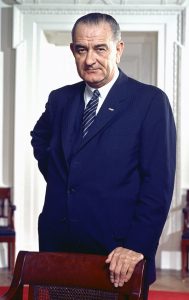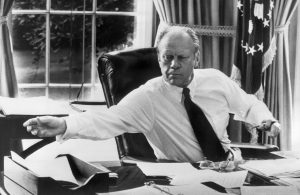
The Federal Executive Boards (FEBs) were established by Presidential Directive on November 10, 1961 by President John F. Kennedy as a forum for communication and collaboration among Federal agencies outside of Washington, DC.
“As a first step in bringing Federal officials outside of Washington closer together, I have directed the Chairman of the Civil Service Commission to arrange the establishment of a Board of Federal Executives in each of the Commission’s administrative regions.”
1) Boston, MA
2) Chicago, IL
3) Denver, CO (Changed to the Colorado FEB in 2010).
4) Dallas-Ft. Worth, TX
5) New York City, NY
6) Philadelphia, PA
7) San Francisco, CA
8) Seattle, WA
9) St. Louis, MO
10) Atlanta, GA
In late 1962 and early 1963, The United States Civil Service Commission, with the approval of President Kennedy, approved the establishment two additional Federal Executive Boards.
11) Los Angeles, CA. September 20, 1962.
12) Greater Kansas City, MO. January 2, 1963.
On July 6, 1966, President Lyndon B. Johnson announced the establishment of three new Federal Executive Boards.
“The work of Federal Executive Board is my work too, and they will have my continued personal interest and support. The Boards deserve and will have the full cooperation of Federal executives in Washington and in the field. “
13) Cleveland, OH
14) Honolulu-Pacific (This is the first statewide FEB established)
15) Minneapolis-St. Paul, MN (Known today as the Minnesota FEB)

 On August 13, 1969, President Richard M. Nixon authorized the establishment of 10 additional Federal Executive Boards.
On August 13, 1969, President Richard M. Nixon authorized the establishment of 10 additional Federal Executive Boards.
“I concur in the recommendations of the report on Federal Executive Boards submitted by you and the Chairman of the Civil Service Commission.
Act immediately to carry our those recommendations. Federal Executive Boards can be an effective means of implementing a wide range of Administration policy. “
16) Baltimore, MD
17) Buffalo, NY
18) Cincinnati, OH
19) Detroit, MI
20) Albuquerque (Changed to the New Mexico FEB in the early 2000s)
21) New Orleans, LA
22) Newark, NJ
23) Portland (Changed to the Oregon FEB in 1998)
24) Pittsburgh, PA
25) Miami, FL (Changed to the S. Florida FEB in 2011)

On June 18, 1970, President Nixon met with the Federal Executive Board Chairs in the Cabinet Room of the White House. Immediately behind the President is Adrian Dove, Office of Management and Budget, who organized the FEB Conference in Washington.

On March 30, 1976, President Gerald R. Ford announced the establishment of a Federal Executive Board in Houston, Texas.
“As a result of their demonstrated commitment and enthusiasm, I believe FEBs can continue to be instrumental in supporting Presidential initiatives and programs.”
26) Houston, TX
 Established in 1966 as a Federal Executive Association (FEA), the San Antonio FEA petitioned the U.S. Office of Personnel Management on May 4, 1989, to become the Alamo Federal Executive Board.
Established in 1966 as a Federal Executive Association (FEA), the San Antonio FEA petitioned the U.S. Office of Personnel Management on May 4, 1989, to become the Alamo Federal Executive Board.
On April 19, 1990 The Alamo Federal Executive Board was established.
27) Alamo (Located in San Antonio, TX)
 Since the mid 80s, the Federal Executive Council of Oklahoma City and Tulsa Federal Executive Association served as singular organizations in their communities.
Since the mid 80s, the Federal Executive Council of Oklahoma City and Tulsa Federal Executive Association served as singular organizations in their communities.
On September 10, 1990, the FEC of Oklahoma City petitioned the U.S. Office of Personnel Management to establish the State of Oklahoma Federal Executive Board.
On April 2, 1993, the Oklahoma City Federal Executive Board was established.
28) Oklahoma City (Changed to the Oklahoma FEB on December 18, 2001)
FEDERAL EXECUTIVE BOARDS
Agency Authority and Oversight
November 10, 1961-August 15, 1969: The Federal Executive Boards operated under the authority of the US Civil Service Commission.
August 15, 1969: President Nixon directs the US Civil Service Commission to move the FEB Secretariat to the Bureau of Budget (Now Office of Management and Budget)
USCSC Memo-Heads of Federal Executive Associations
October 13, 1978: Civil Service Commission was reorganized into three new organizations
- January 1, 1979. US Office of Personnel Management
- Merit Systems Protection Board
- Federal Labor Relations Authority
June 7 1982: Harold L. Steinberg, Associate Director for Management, Office of Management and Budget, issued a letter announcing the transfer of Federal Executive Board functions from OMB to OPM.
The letter stated:
“Recently, the Office of Management and Budget (OMB) and the Office of Personnel Management (OPM) reached an agreement to transfer administrative functions for FEBs from OMB to OPM.
Under OPM’s guidance, we know the FEB system will continue to promote efficiency and effectiveness in the operation of our federal government through coordination among agencies in the 26 cities. OMB, as one of the central management agencies, will continue to keep the FEB network informed as important government initiatives are announced.”
August 29, 1984-Present: 5 CFR was amended by the Director, U.S. Office of Personnel Management, to include Part 960-FEDERAL EXECUTIVE BOARDS
The FEB responsibilities are outlined in Title 5, United States Code of Federal Regulations, Part 960 (5 CFR Part 960).
Federal Executive Board Historical Documents
Establishment of the FEBs – November 10, 1961
Arrangement for Establishing and Continuing Relationships with Federal Executive Boards – December 22, 1961
US Civil Service Commission Background Memo, December 1961
US Civil Service Commission report on Federal Executive Boards – September 25, 1962
JFK Letter-Review of FEB activities and accomplishments – October 21, 1963
Pres. Johnson Letter to the Federal Executive Boards-August 16th, 1965
Pres. Johnson letter to the FEB- August 29, 1968
Evaluation of Federal Executive Boards, recommend expanding to 25 July 10, 1969
Pres. Nixon letter establishing 10 additional FEBs August 13, 1969
OMB Memo-Funding for Federal Executive Boards – June 14, 1972
Memorandum for Heads of Departments and Agencies – February 5, 1973
Pres. Ford Speech-Honolulu-Pacific Federal Executive Boards– May 17, 1974
Pres. Ford Letter to the Federal Executive Boards – March 21, 1975
First Lady Betty Ford-October 14-1975-Cleveland FEB October 14, 1975
Establishment of the Houston FEB – March 30, 1976
Establishment of the Alamo FEB-April 19, 1990
Transfer of Federal Executive Board function from OMB to OPM, June 7, 1982
Pres. Bush Letter-30th Anniversary, October 1991
President Clinton Letter – December 8, 1994
VP Gore-The Role of FEBs and FEAs in Reinventing Government January 21, 1995
OPM letter to FEBs September 11, 2001
Pres. GW Bush Letter, 40th Anniversary, of the Federal Executive Boards – November 6, 2001
Pres. Obama Letter, 50th Anniversary – July 12, 2011
US Senate Resolution-50th Anniversary of the FEBs – November 10, 2011
Pres. Joe Biden 60th Anniversary Letter-November 10, 2021
Federal Executive Board Annual Reports
1962-1969
1963 FEB Annual Report
1970-1979
1980-1989
1990-1999
2000-2009
2005 FEB Annual Report
